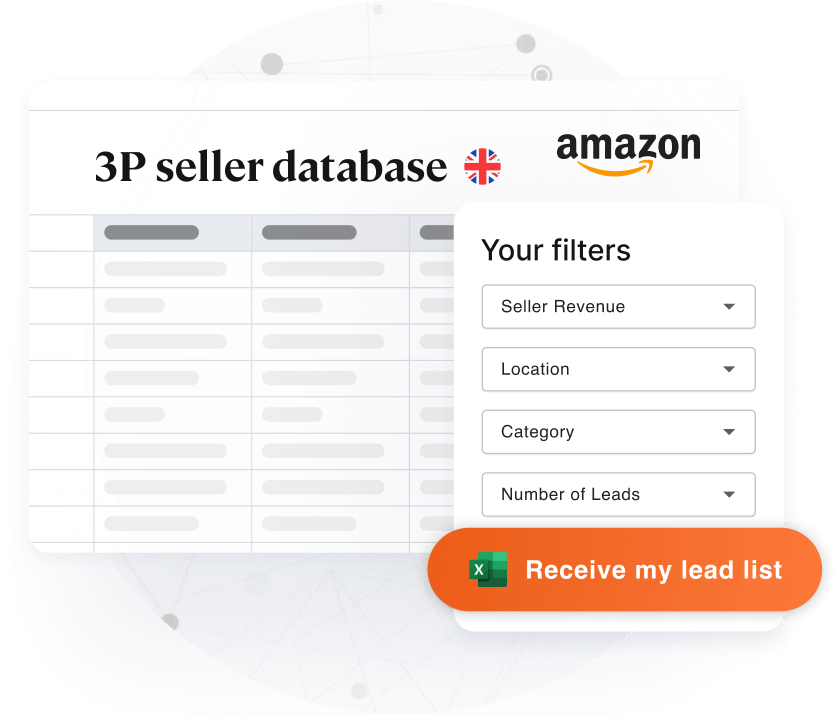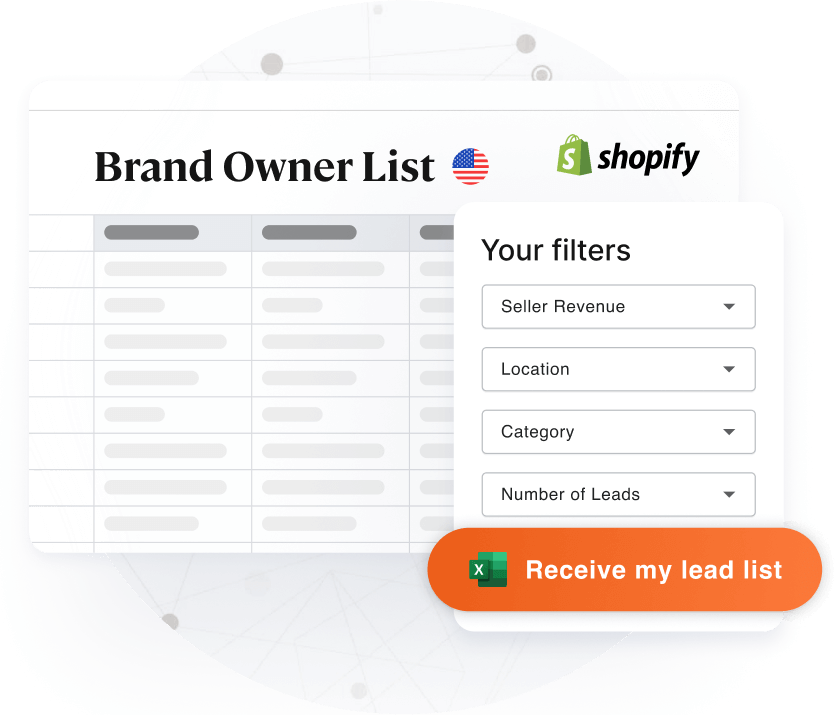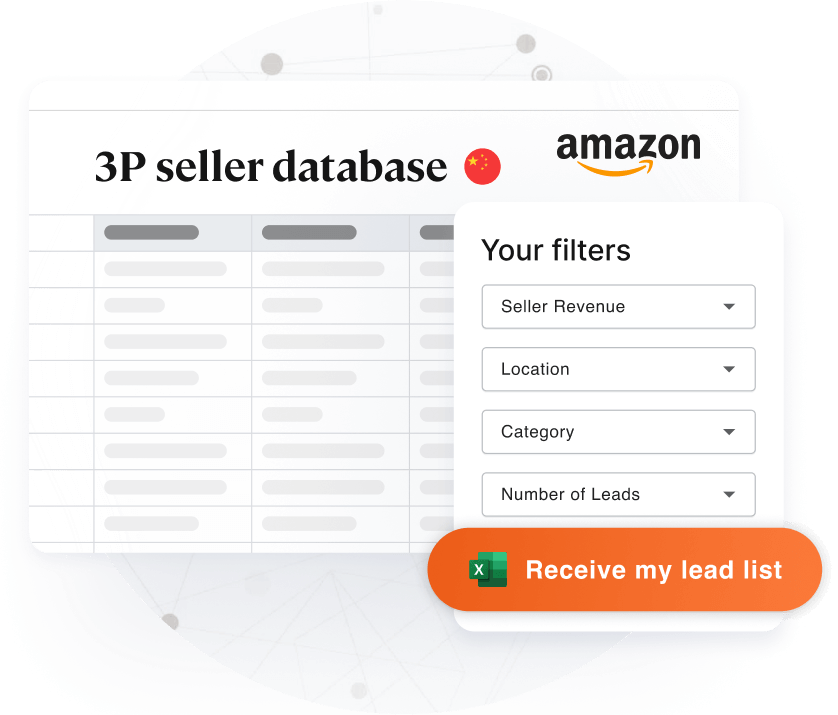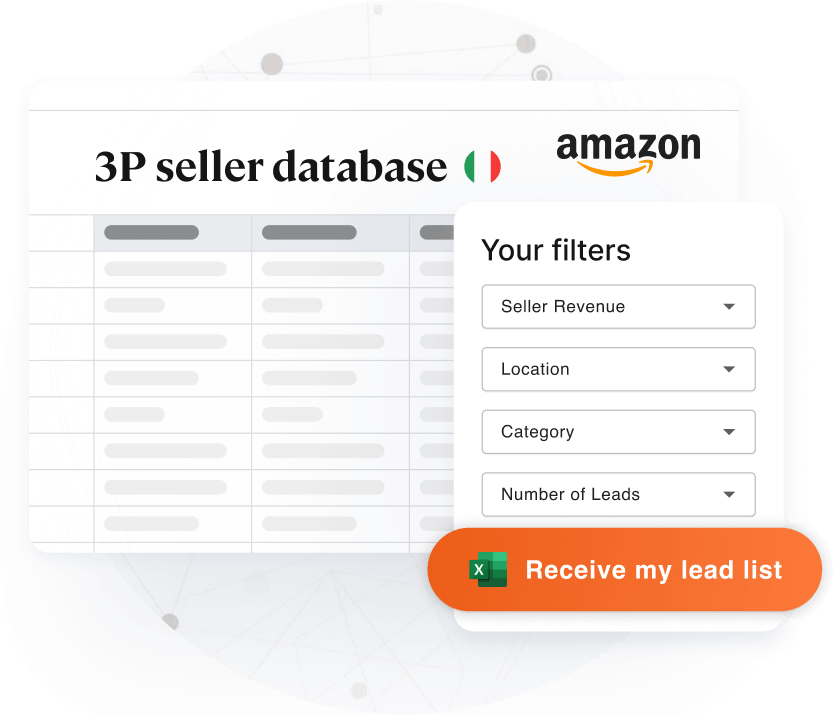How to Identify Your Ideal eCommerce Customer Profile
An ideal customer profile (ICP) is your compass to finding the right B2B customers. Your services are great but not meant for all eCommerce brand owners or Amazon sellers. So, seeking out the eCommerce brands that need your services is your first step in implementing an effective marketing and sales process. This article will help you do that as we discuss identifying the ideal customer profile of eCommerce sellers for your business. We will also tell you how to use the customer profile generated to find sales prospects.
What is a Customer Profile?
An ideal customer profile is a speculative description of an eCommerce store for which your solutions or services are best suited. It is important to note that, unlike the buyer persona, the ideal customer profile does not target an individual but a company or business. However, in some cases, the ideal customer profile may consider an individual in the eCommerce store who is a stakeholder and whose influence may strongly affect essential decisions concerning the store.
An ideal customer profile helps you discover the eCommerce stores that will get the most value from your solutions or services. Since you offer so much value to these stores, i.e., “They Need You!” they are more likely to move through the sales cycle fastest, have a higher retention rate, and advocate for your business the most.
To define the ideal customer profile for your business, you need to use “firmographics.”
Firmographics of Your Ideal eCommerce Seller Customer Profile
Firmographics are characteristics that describe the eCommerce store that needs your services. This data is similar to demographic data in that it categorizes and targets potential customers.
Typical firmographics to create your ideal eCommerce seller customer profile include:
1. The Average Store Size
You should consider the average store size of prospective eCommerce stores to get an idea of the revenue potential, product fit, and how to allocate your resources. To define the store size, we can look at different metrics.
- For Direct-to-consumers (DTC) Stores: You need to consider the monthly traffic, average number of units sold, number of products in the inventory, etc.
- For Amazon sellers: You can estimate the average store size by looking at the number of seller reviews, product reviews, and products carried by the sellers.
2. The Technology the Brand Uses
You need to ask critical questions like: "Is the brand using a specific eCommerce store provider like Shopify, WooCommerce, or Magento? Do they use additional technology store within the store?
In that regard, you can be pretty granular in terms of what plugin they use to operate their store since most of the tech solutions will leave some trackable traces on the store code. Technology lookup allows you to find a store using a specific technology solution.
3. The Average Store Revenue
The average store revenue gives you insight into the financial performances of the eCommerce brand.
4. The Ideal Industry or Industries of the Store
Characteristics like the type of products the store sells and what categories they cover can help you understand if they fit your ideal customer profile. Common categories include home and kitchen, apparel, etc.
5. The Company Location
You need to know the country, state, or city of the eCommerce store.
6. The Company Target Market
Is the store a UK company in the US? Or is the store selling in their domestic market? For instance, these filters will be particularly useful for a logistics company.
7. Company Business Model
Is the store selling its own product (private label sellers) or reselling someone else product (wholesaler)?
Why Create an Ideal Customer Profile?
Creating an ideal customer profile will help you develop an effective marketing and sales strategy that ultimately generates more profit. As a B2B company serving eCommerce stores, you need a clear understanding of the stores your products are suited for if you want to make a good profit.
It is important to note that the primary goal of creating an ideal customer profile is not to make a profit alone but to understand your customers better and to put the knowledge acquired from studying your customers into use in every aspect of your business, including product improvement, marketing, sales and more.
To put it more succinctly, an ideal customer profile will help you understand everything about your customer, enabling you to make higher profits.
Ideal Customer Profiles vs Buyer Personas
Many B2B marketing and sales teams are still confused about the difference between an ideal customer profile and a buyer persona. Many aren’t sure if ICPs should replace buyer personas.
Let’s help you understand the difference.
An ideal customer profile focuses on the eCommerce store you are targeting and not on individuals within the company who will use the products. The idea is that the company is seen as an entity removed from the individual preferences of the staff.
To understand an eCommerce store, you must focus on its business model, product category, seller reviews, location, customer base, revenue, budget, etc.
On the other hand, a buyer persona focuses on the individuals within the eCommerce store who need to make specific purchasing decisions. For example, the head of the sales or marketing department. While it is true that the ideal customer profile firmographics of the eCommerce store should influence your buyer persona, the buyer persona should use demographics such as positions, job titles, seniority, and functions.
Other examples of major decision makers in an eCommerce store who you should consider while developing your ideal customer profile include the following:
-
CEO/Owner/founder: This person has the highest decision-making power.
-
Marketing Executive: This person oversees the store’s branding and marketing.
-
Logistic/Procurement manager (or often COO): This person oversees the processes involved in managing the store’s inventory and ensuring that products are delivered promptly and efficiently to customers.
-
CFO/finance department: This person makes all finance-related decisions
-
eCommerce/marketplace manager: This person manages the store’s operation, strategy, and performance. They oversee the day-to-day activities of the store.
For smaller stores and sellers, sometimes the solopreneur behind the company is the only one able to decide for everyone. For each business solution you sell, you must consider the company's needs and the pain points of the individual who’ll be using this tool.
How do you Create an Ideal Customer Profile?
Many eCommerce sellers are on different platforms like Amazon, e-Bay, Shopify, etc. You could reach out to these sellers by manually searching for their contact information on these different platforms or using our eCommerce seller B2B contact databases. It has all the information you need about these sellers.
But that doesn’t solve all your problems.
It could be a while if you wanted to contact all these stores about your solution because no matter how good your marketing or sales strategy is, some sellers simply do not need what you’re offering!
So, how do you fish out the ones dying to have a solution like yours? In other words, how do you identify the ideal customer profile?
The first thing you need to do is:
Categorize the eCommerce Sellers Into Segments
The eCommerce sellers or stores who need your services fall into a category, and your first step at identifying this ideal customer profile is grouping the eCommerce sellers into different segments.
To segment eCommerce sellers and create an ideal customer profile, you need to consider the following.
A. Seller's Business Model
Understanding the business model of an eCommerce seller or store would help you identify which ones would benefit the most from your services. These are the ones you should target to increase your revenue.
You should consider different business model categories such as the following:
-
Marketplace or Direct-to-consumer: Certain eCommerce sellers sell through marketplaces like Amazon and Etsy, while others sell through their websites.
-
Subscription-based or one-time purchases: Some eCommerce sellers sell products that require buyers to pay on a recurring basis, while others sell products that require one-time purchases.
-
Private Label or Resellers: An eCommerce seller might sell products under their private label while another might resell products from other brands.
-
Drop-shipping or Inventory-based Sellers: Some sellers operate a business model that requires them to hold an inventory while others do not.
B. Product Category
E-commerce sellers whose products align with your services better fit your service. You can segment eCommerce sellers based on their product category using the following criteria:
-
Industry: You can segment eCommerce sellers into categories like fashion, electronics, home improvement, etc., based on what they sell.
-
Target Audience: Some sellers may sell mainly to men, women, children, pet owners, etc.
-
Price Range: You could group sellers into groups like luxury, mid-range, or budget, depending on how much they charge for their products.
C. Seller Reviews
That’s right! What an eCommerce store’s buyers say about the seller can be a helpful tool in helping you know if they’re a right fit for your business. The seller reviews give you the following insights about eCommerce sellers.
-
Order Volume: Having many reviews helps you know if the eCommerce seller can fulfill plenty of orders efficiently and in a timely manner.
-
Customer Satisfaction: You’ll know if there’s a need you can fulfill for an eCommerce seller in terms of customer satisfaction by getting an insight into how much positive feedback they’re getting from their customers.
-
Communication: You can also predict if a seller responds quickly to inquiries from the reviews of customers in terms of communication from the seller reviews. This will let you know what stores would be quick and easy to work with.
D. Company Location
Depending on your specific business goals and requirements, the location of an e-commerce store can help you decide if an eCommerce store is an ideal customer profile. The location helps you understand the following about the eCommerce sellers:
-
Regulations and legal requirements: You might be offering services with certain legal limitations in the location of the eCommerce seller. In this case, making adequate provisions or ignoring such sellers would be advisable.
-
Market Demand: The location of an eCommerce seller can also impact their demand for your product.
Identifying your Ideal customer profile becomes a piece of cake once you can segment eCommerce sellers like this. It gets even better because our B2B contact database has over 30 data points that help you categorize eCommerce sellers into smaller segments.
I Have My Ideal Customer Profile. Now What?
Now you make it the center of your marketing and sales strategies.
Your ideal customer profile is to help you better understand who needs your product the most. So, if you have followed all the steps in identifying your ideal customer profile, the next step is to use the knowledge acquired in marketing and sales strategies.
How to use ICPs in your Marketing Process
Making sure that your marketing efforts are directed toward a target audience of ideal customers is essential for the success of your business. With an ideal customer profile, you can create content and campaigns tailored to those customers. For instance, you can create B2B cold email highlighting how your solution can solve the specific pain point of the e-commerce seller because now you know their biggest headaches.
Content marketing is one way to engage with store owners at each stage of the buyer’s journey. By creating content tailored to your ideal customer profile, you can provide information about the relevant product or service to the customer. This lets them know you understand their needs and pain points and can meet them.
Check this out: We know that different businesses need an ICP. However, we've been able to identify that our Ideal Customer profiles are businesses like yours who're want to reach out to eCommerce sellers, and sell your solutions to them. Now, can you see how we've tailored this article specifically for you, and not all other businesses? That's exactly what you need to do as well!
You can ensure that your resources are spent successfully by building an ideal customer profile and using it to inform your marketing activities. This will help you enhance revenue and consumer loyalty in the long run.
How to use ICPs in your Sales Process
Once you've defined your ideal customer profile, it's time to put that knowledge to work expanding and optimizing your sales pipeline. You can ensure that every connection with your consumers is as helpful and productive as possible if you clearly grasp who they are and what they require.
One method is to create tailored pitches for your prospects. You may demonstrate that you understand them and have a solution to their difficulties by personalizing your pitch to their wants and concerns.
For instance, customer data from our B2B contact database can also be used in the sales process to develop relationships with e-commerce sellers before, during, and after the sale. You can, for example, utilize previous purchase data to propose other products or services that may interest them. Alternatively, you can use demographic data to deliver data-driven insights into improving your product or service.
Finally, customer profiles can be used to evaluate leads and focus your energy on e-commerce sellers most likely to convert. By using this knowledge and automation solutions to expedite the process, you can ensure that your sales force focuses on the leads who are most likely to make a purchase.






